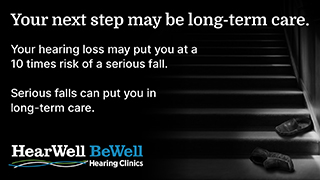 Cats are masters at disguising ailments, with many owners only noticing symptoms when their cat becomes gravely ill. In fact, most pet owners who have lost a feline friend will often reflect on how their cat suddenly became sick, seemingly overnight, and then had to be put down.
Cats are masters at disguising ailments, with many owners only noticing symptoms when their cat becomes gravely ill. In fact, most pet owners who have lost a feline friend will often reflect on how their cat suddenly became sick, seemingly overnight, and then had to be put down.
However, truth is, that cat was likely ill for quite some time.
While many ailments can be terminal, no matter how early they’re detected, a vast majority can be treated if detected early enough. Thankfully, performing monthly home checks on your cat can help to spot the signs of an oncoming illness. Please note that home checks do not negate a proper veterinary check up; domestic felines should have an annual vet check up until the age of seven, and bi-annual checks after that.
How to Perform a Health Check
First of all, take note of your cat’s behaviour. Cats are very much creatures of habit, and even slight changes in behaviour can be an important sign. These changes could be evident through litter box behaviour, appetite or drinking patterns, the sound of their meows, or even small changes in how they groom themselves.
Next, take a look at their weight. Changes in weight are not common for cats who have had a consistent routine for a year or more. Weight changes can often be due to increased or decreased exercise with the changing of the seasons, or with a switch to a new food. However if no changes in their everyday life have been made, it could signify a change in your cat’s health. If you notice an unexpected change in your cat’s weight, it is a good idea to see a veterinarian.
Physical changes outside of your cat’s weight can also be a big indicator of a change in their health. Start by checking their skin and coat. They should have a shiny coat, with moisturized skin. Dry, flaky skin, or a dirty, coarse coat can be signs of a nutritional deficiency, allergy, or sensitivity.
Look at their eyes, nose, and ears, too. In the ears, a small amount of wax is normal, and you can gently remove it with a moist cloth. Odours and runny discharge are not normal however, and can be a sign of infection. Their eyes should also be free from discharge, and should be clean and bright. Their pupils should be the same size, and should also react equally to light. Noses should be moist, not chapped, and should not have any discharge or bleeding.
Your cat’s mouth is also an important indicator of their health. While some cats won’t allow you to look into their mouth, do your best to get a peek. Their gums should be pink. If their gums are red, if there is any foul odour, or you can see visible signs of tooth decay, take them into the vet for a dental check-up. Dental diseases can prevent your cat from eating properly, which can lead to a number of additional health concerns. Your cat should also not be drooling or pawing at their mouth, both of which can indicate dental pain.
When you are done assessing their dental health, take a moment to watch their breathing. A cat should have smooth, effortless breaths, at a rate of about 20-30 breaths per minute. Time the number of breaths they take in a fifteen-second window, and multiply that by four. They should not be coughing, wheezing, panting, or gasping for air. If you cat has rapid or seemingly laboured breaths, or is panting with their mouth open, seek immediate emergency veterinarian care.
Next, you will want to check their mobility. Encourage your cat to walk towards you or follow you. Do they seem stiff? Do they limp or have difficulty walking? Try to get your cat to jump up onto a surface, such as a chair or table, and monitor whether they have difficulty doing so. Joint and mobility problems are common with age, and thankfully there are some excellent supplements on the market to help counteract the effect of aging.
The final step to performing a home health check on your cat is to run your hands all over their body. Use gentle pressure, and check their torso, neck, and legs. If they flinch or respond with discomfort in any area of their body, have them checked by a veterinarian. Also look for things like fleas or ticks, especially between the pads of their feet, and take note of any new lumps or bumps.
While performing a home health check does not replace a professional veterinary exam, it is a simple and effective way to keep preventative tabs on your cat’s health.
Brandon Forder – also known as The Pet Expert – is vice-president of Canadian Pet Connection, a family-owned and -operated business located in Meaford. He has over twenty-five years’ experience specializing in pet nutrition, behaviour, and healthy pet lifestyles. Canadian Pet Connection is an industry leader committed to providing their clients with the highest levels of personal, attentive service. Learn more at www.CanadianPetConnection.ca.










